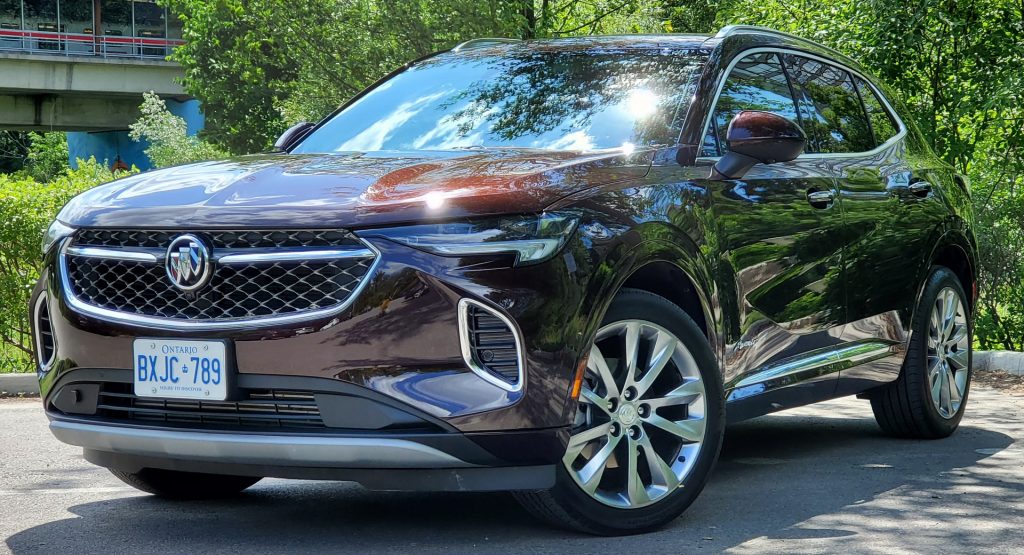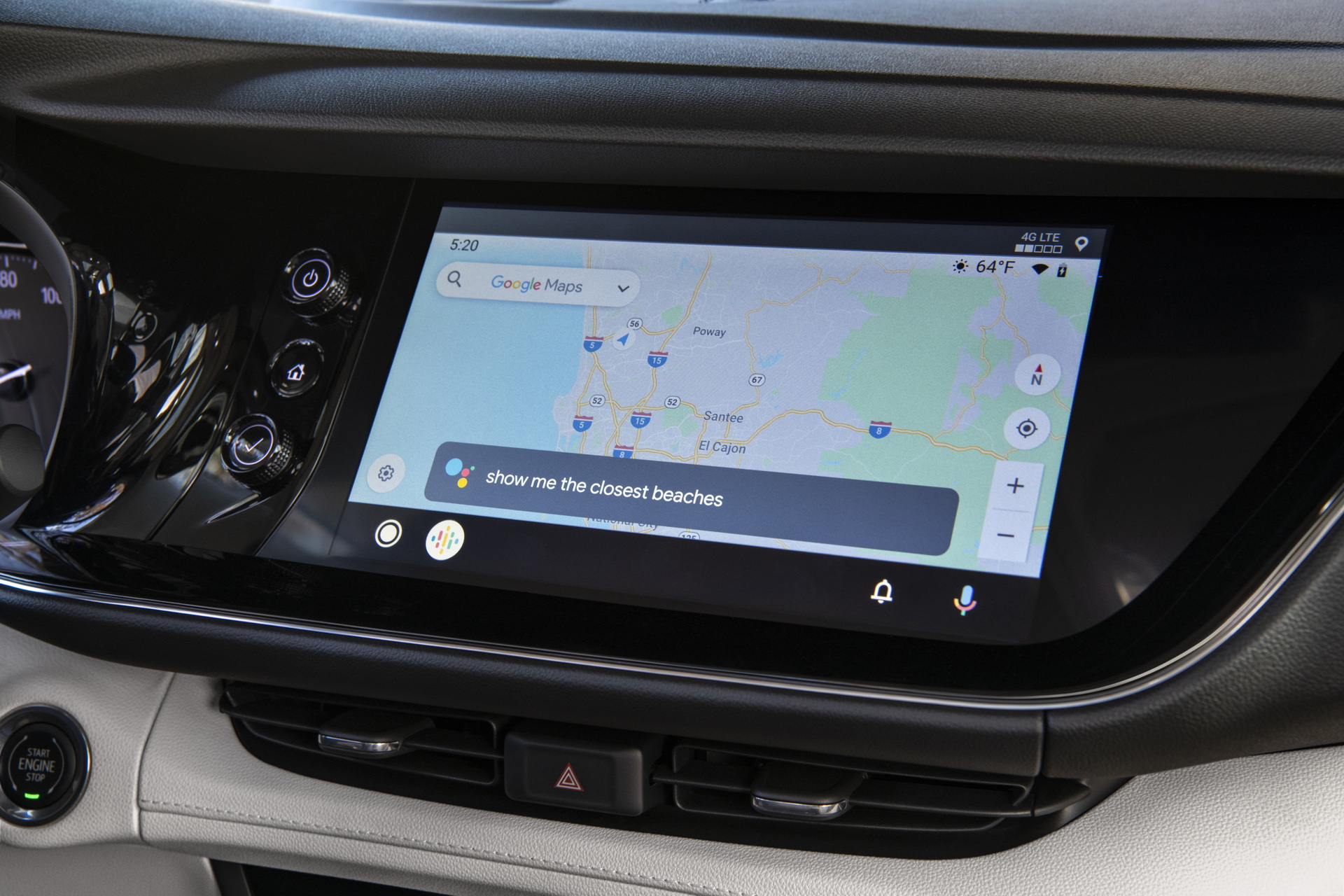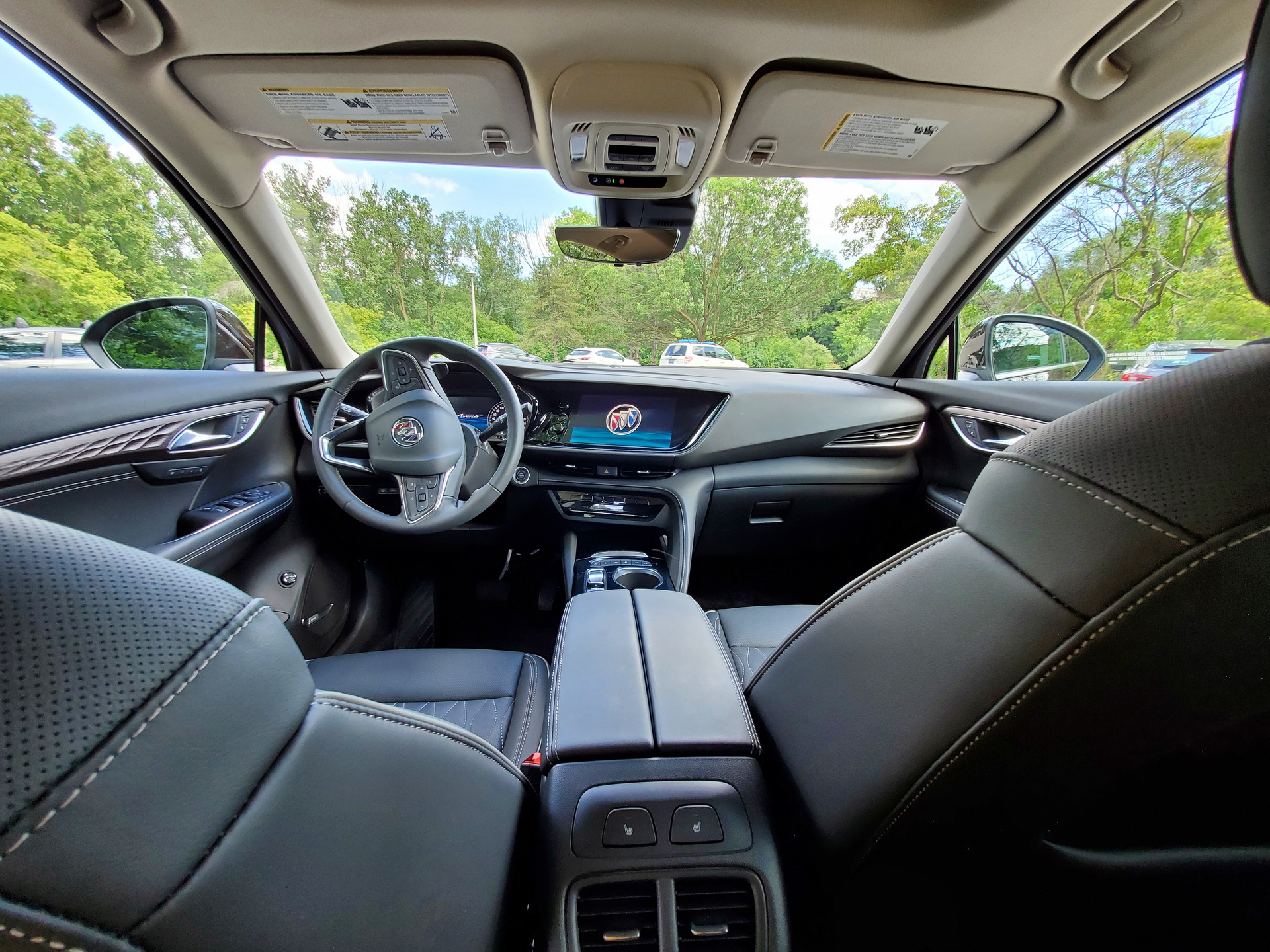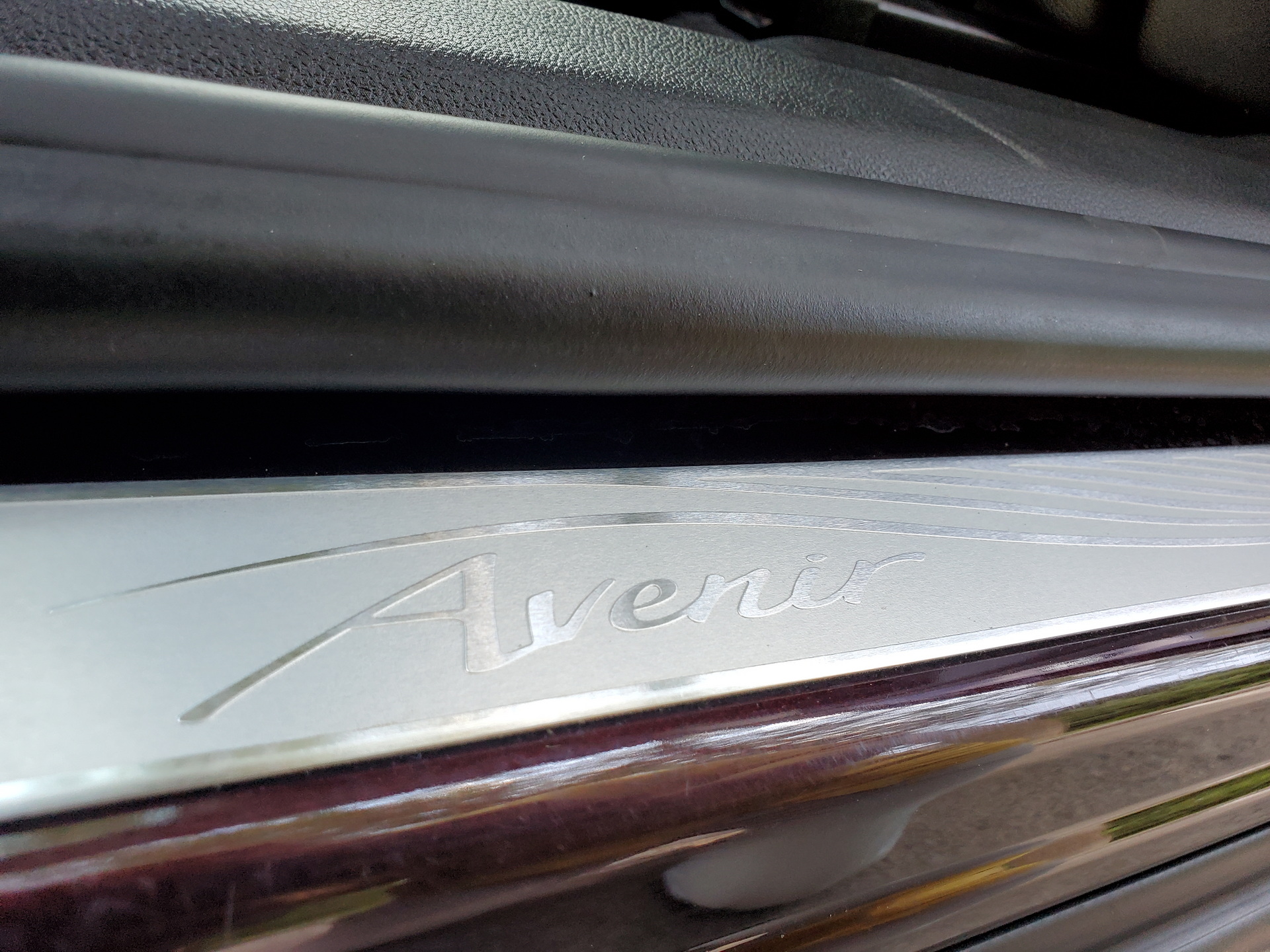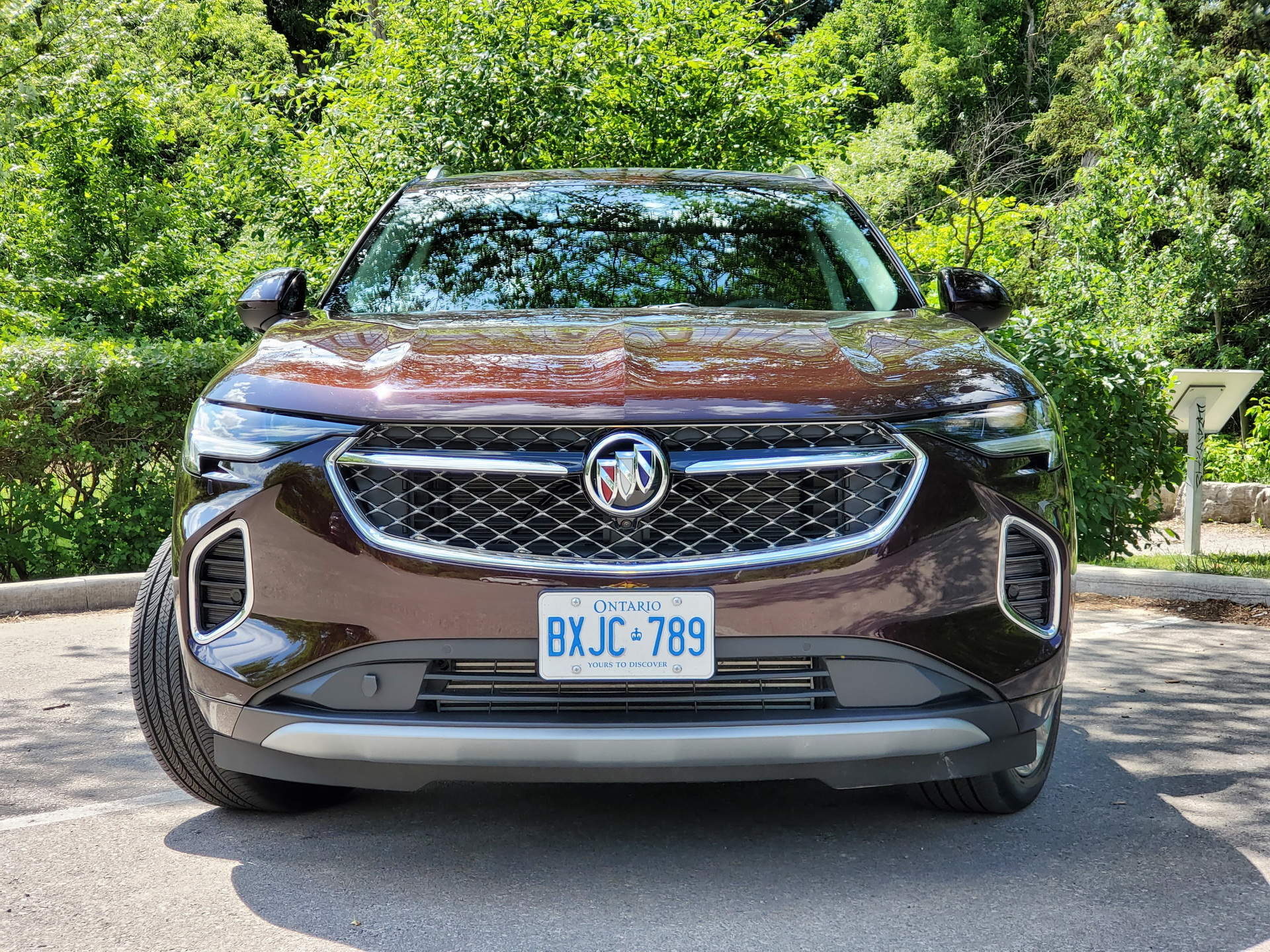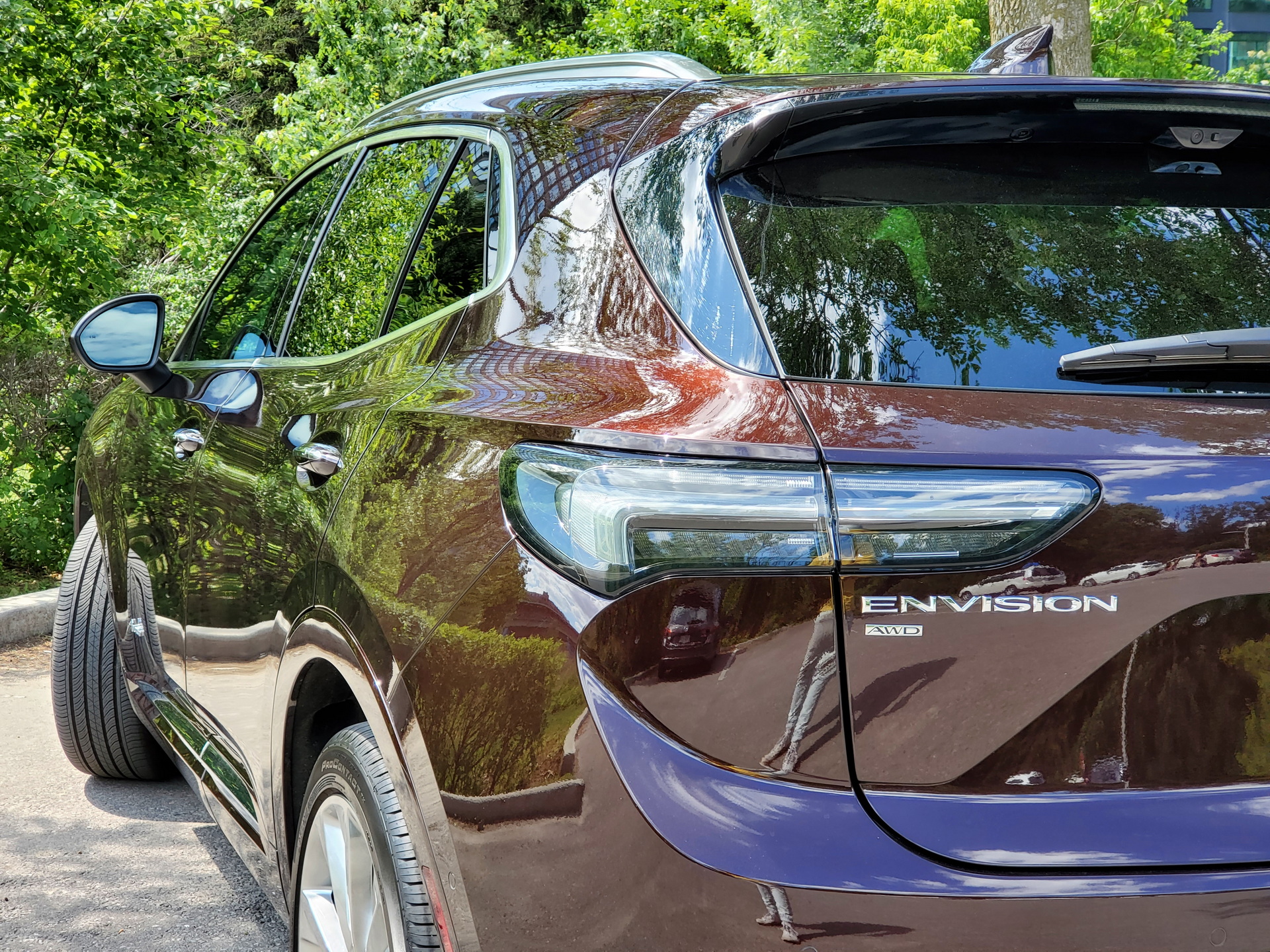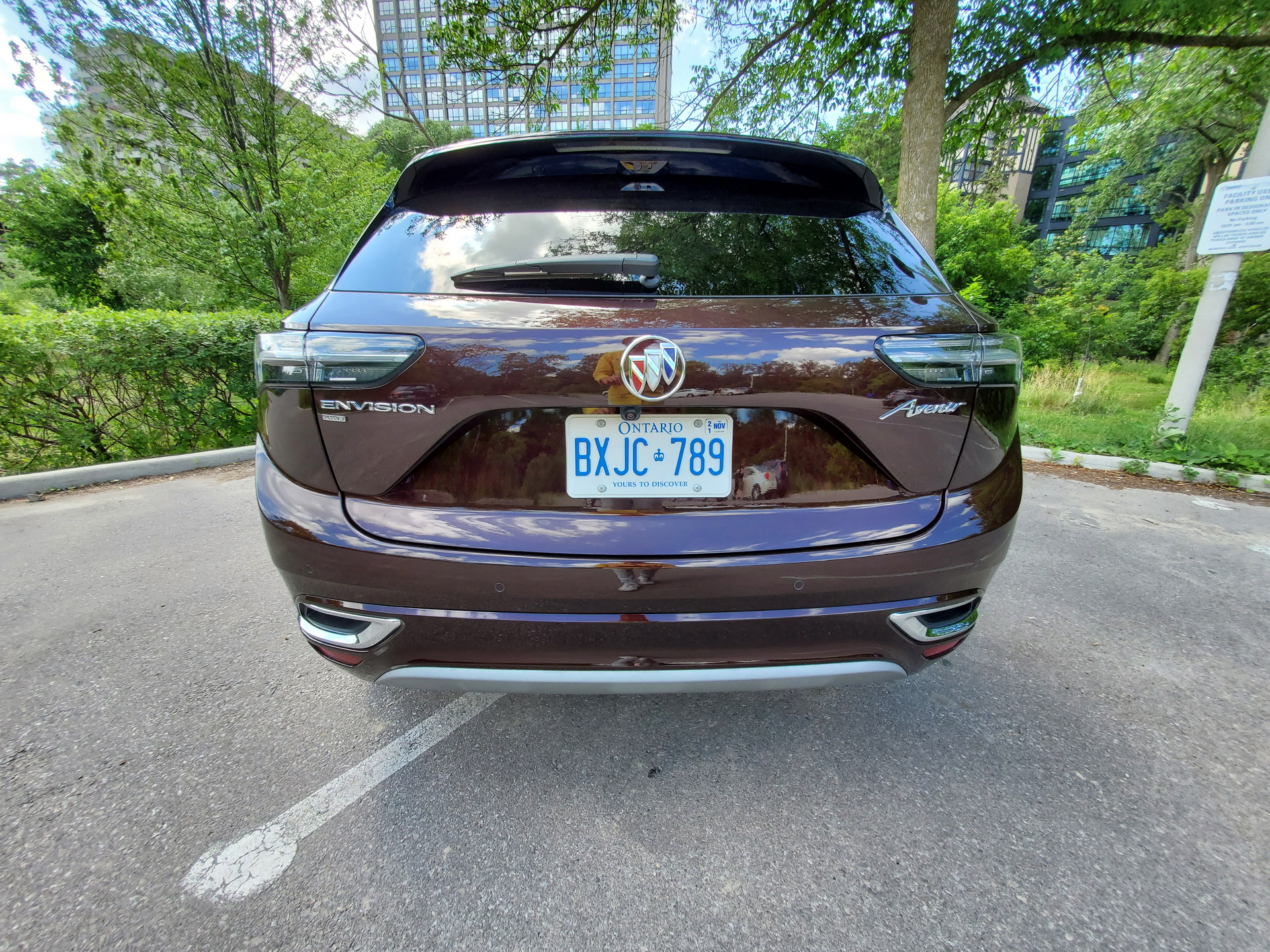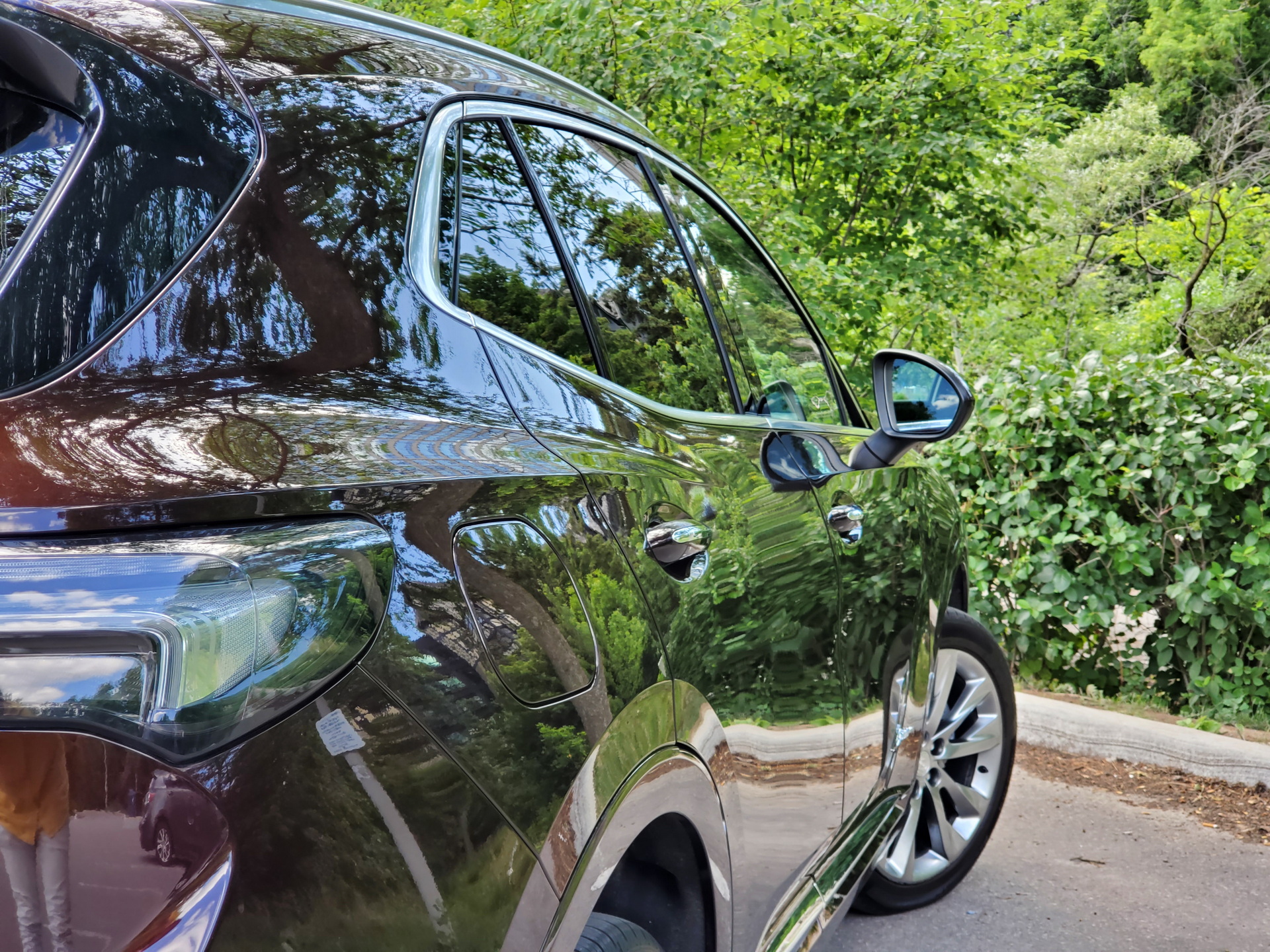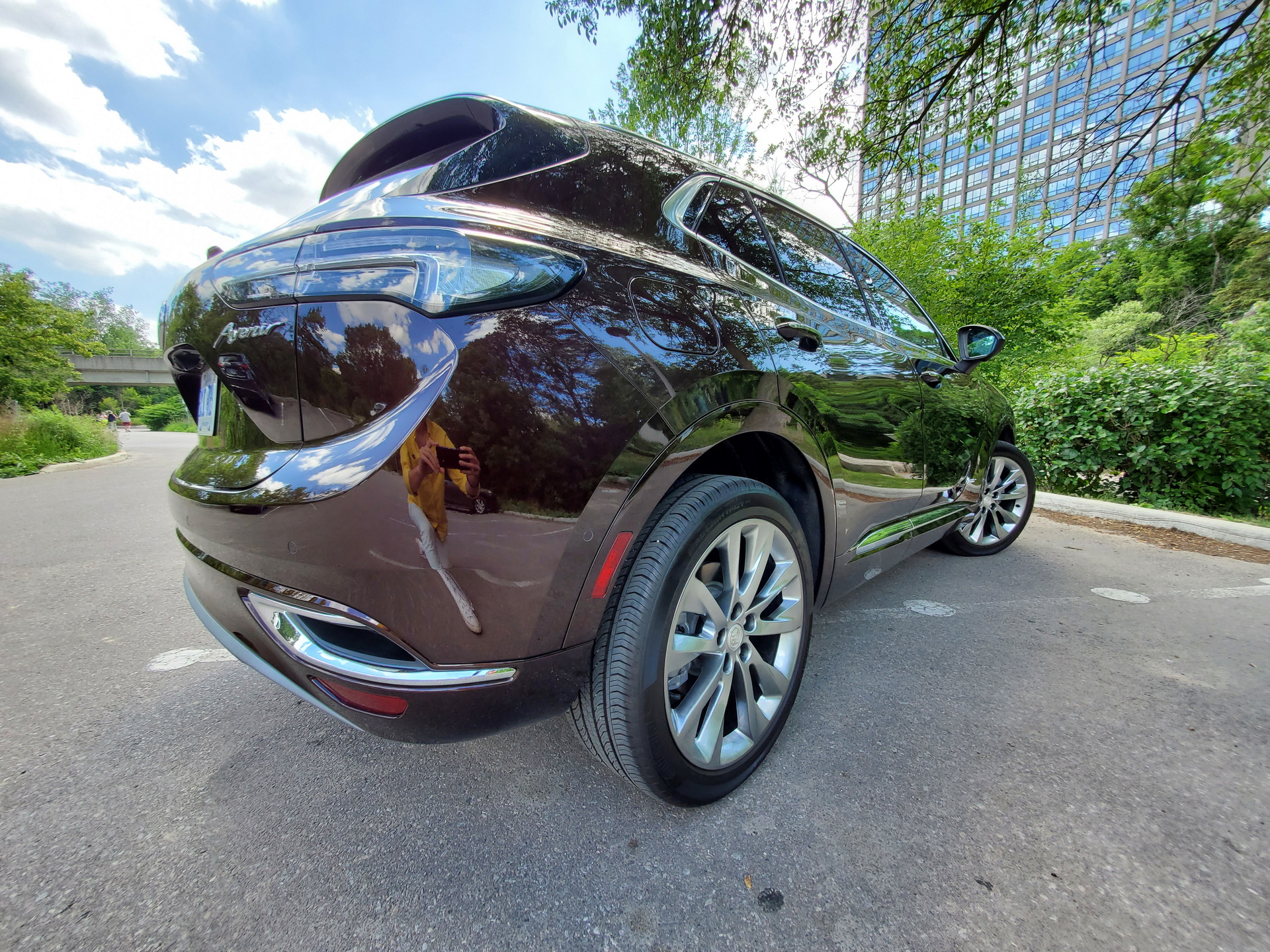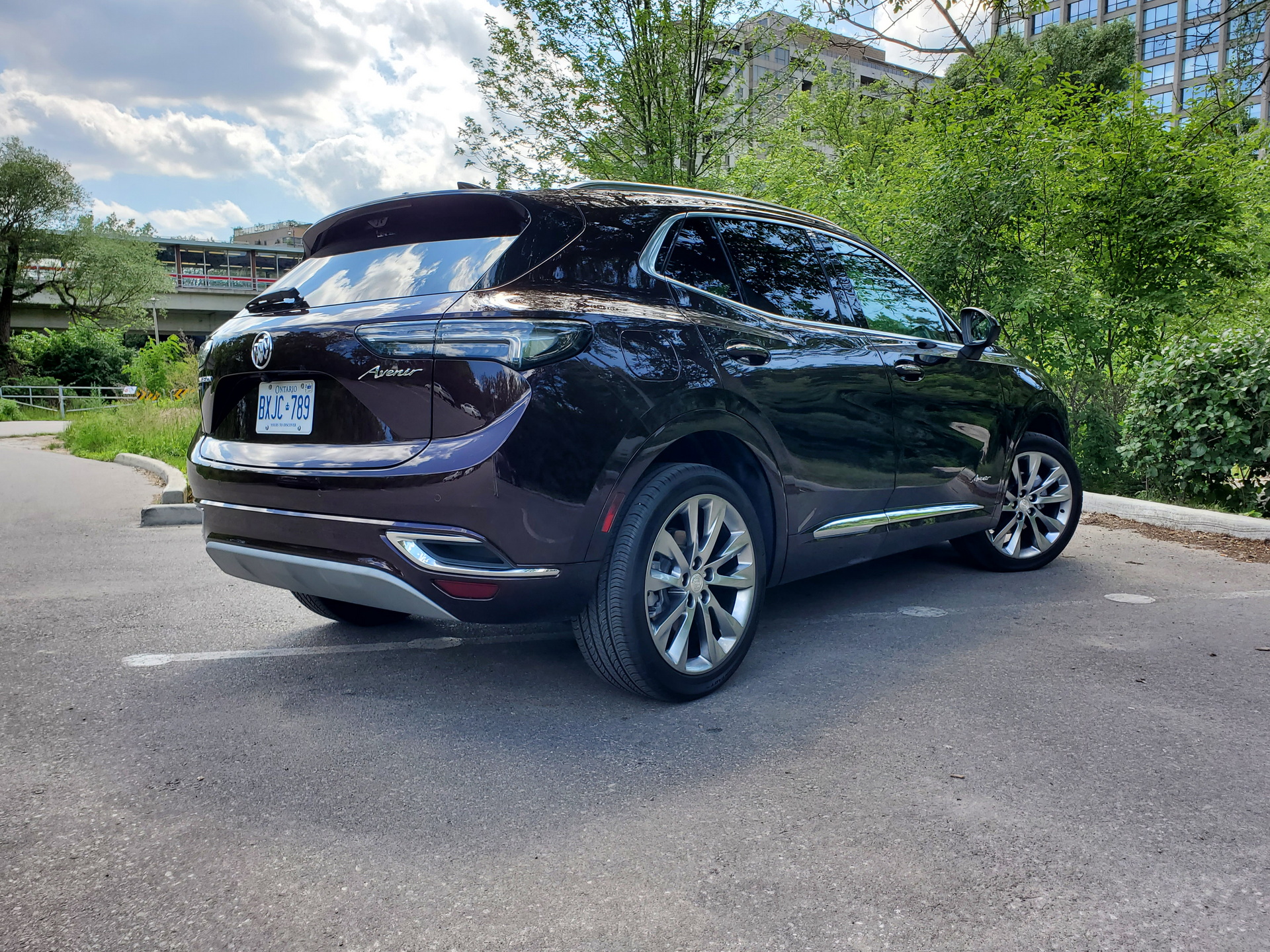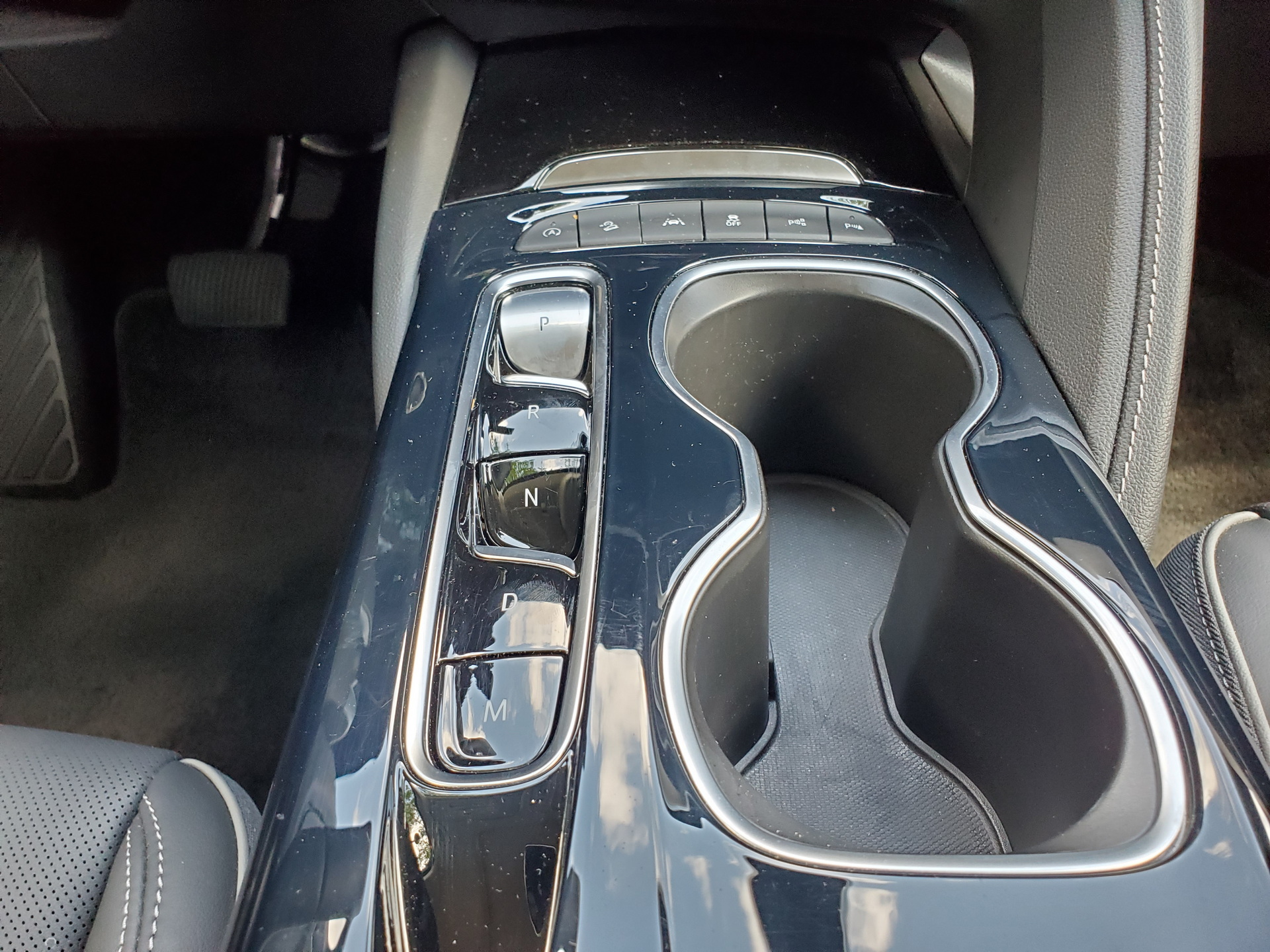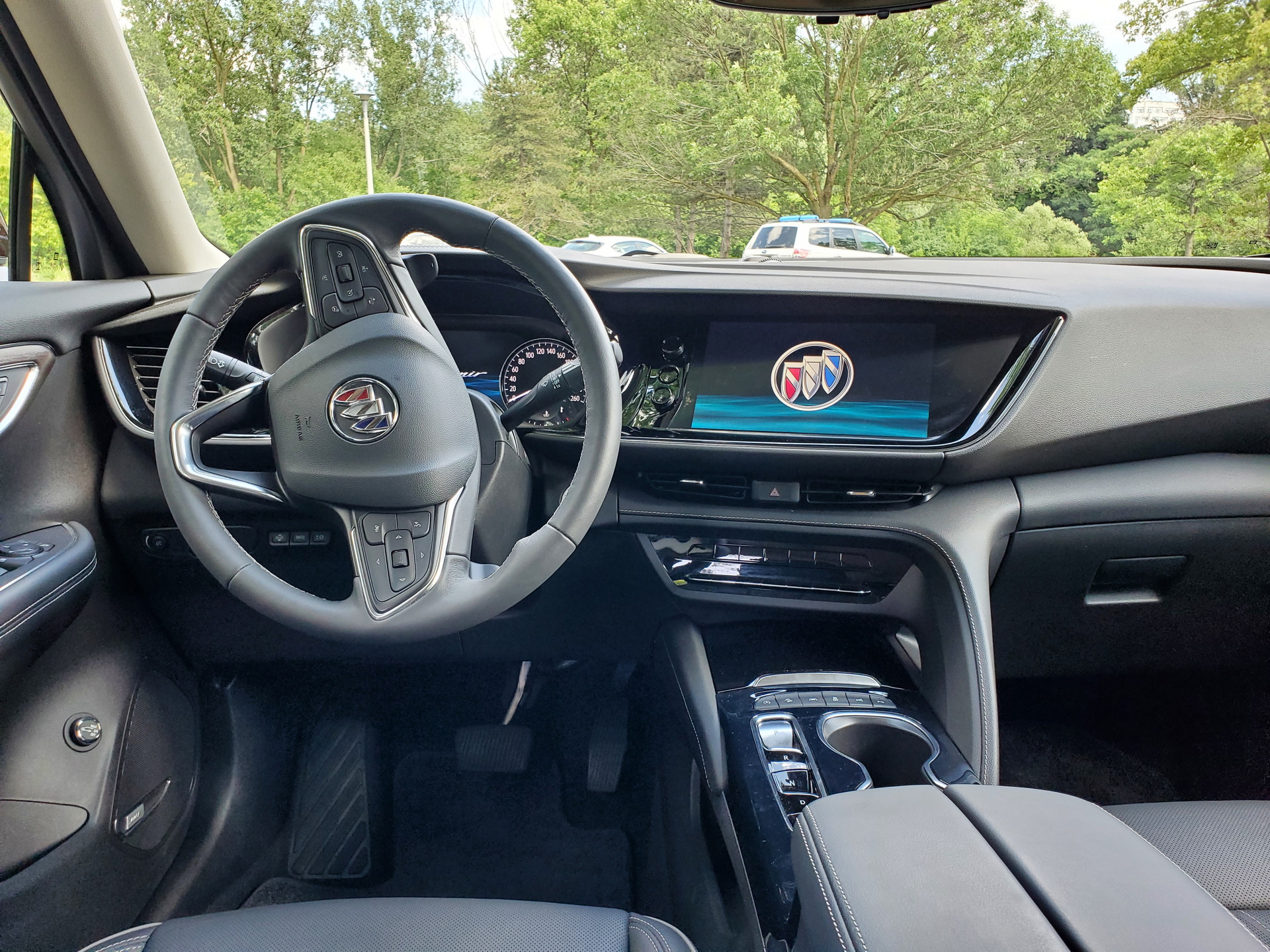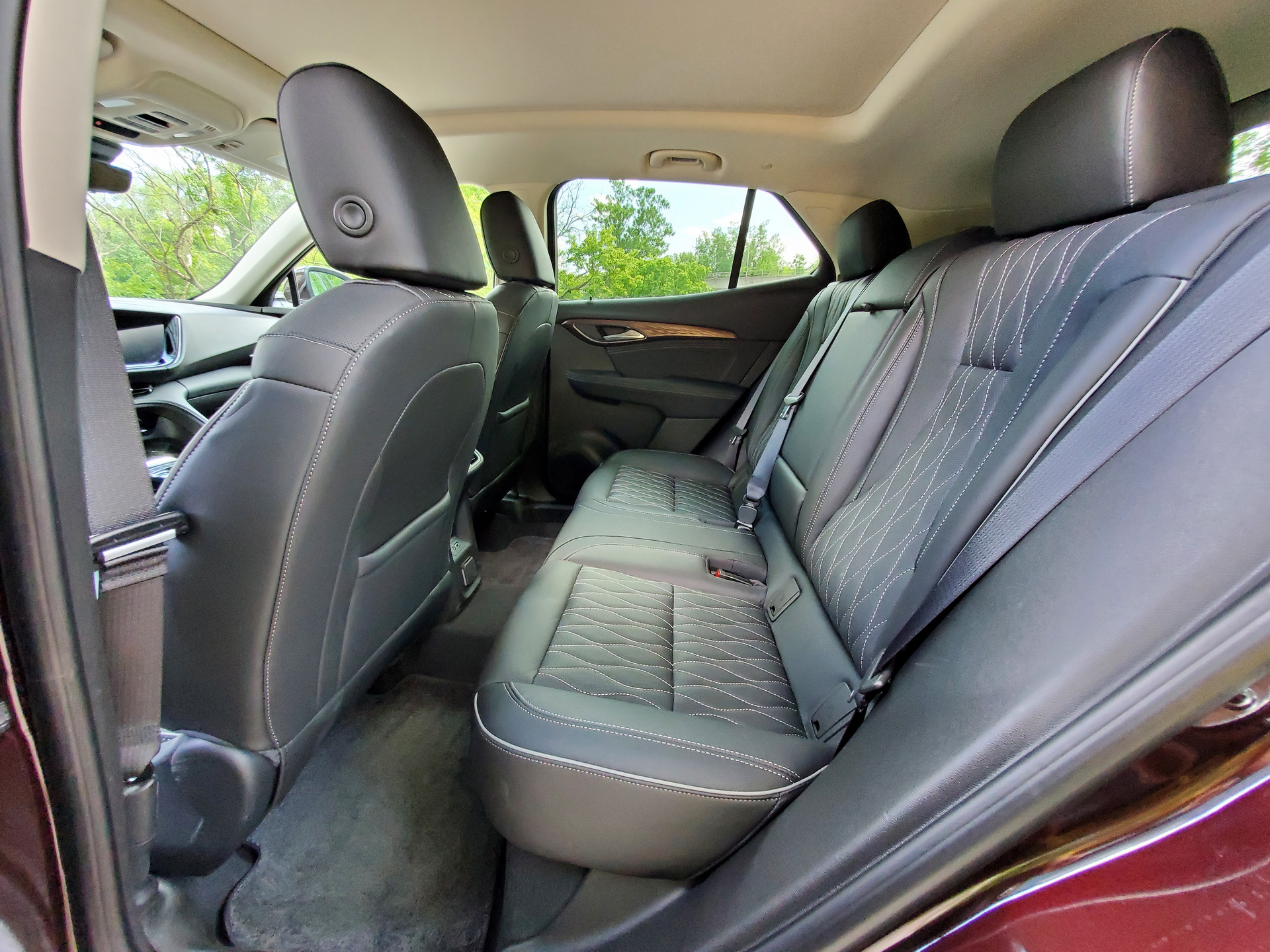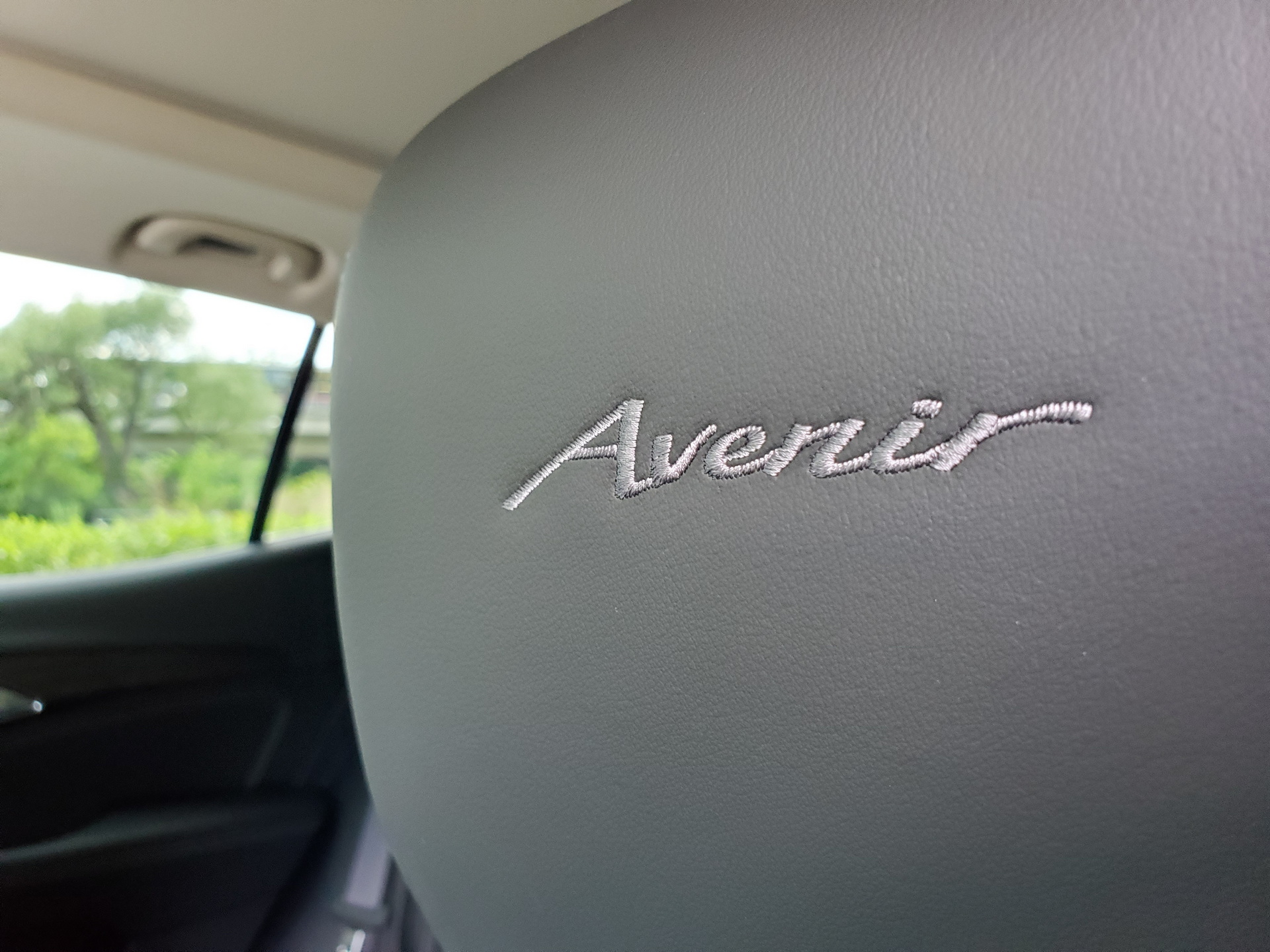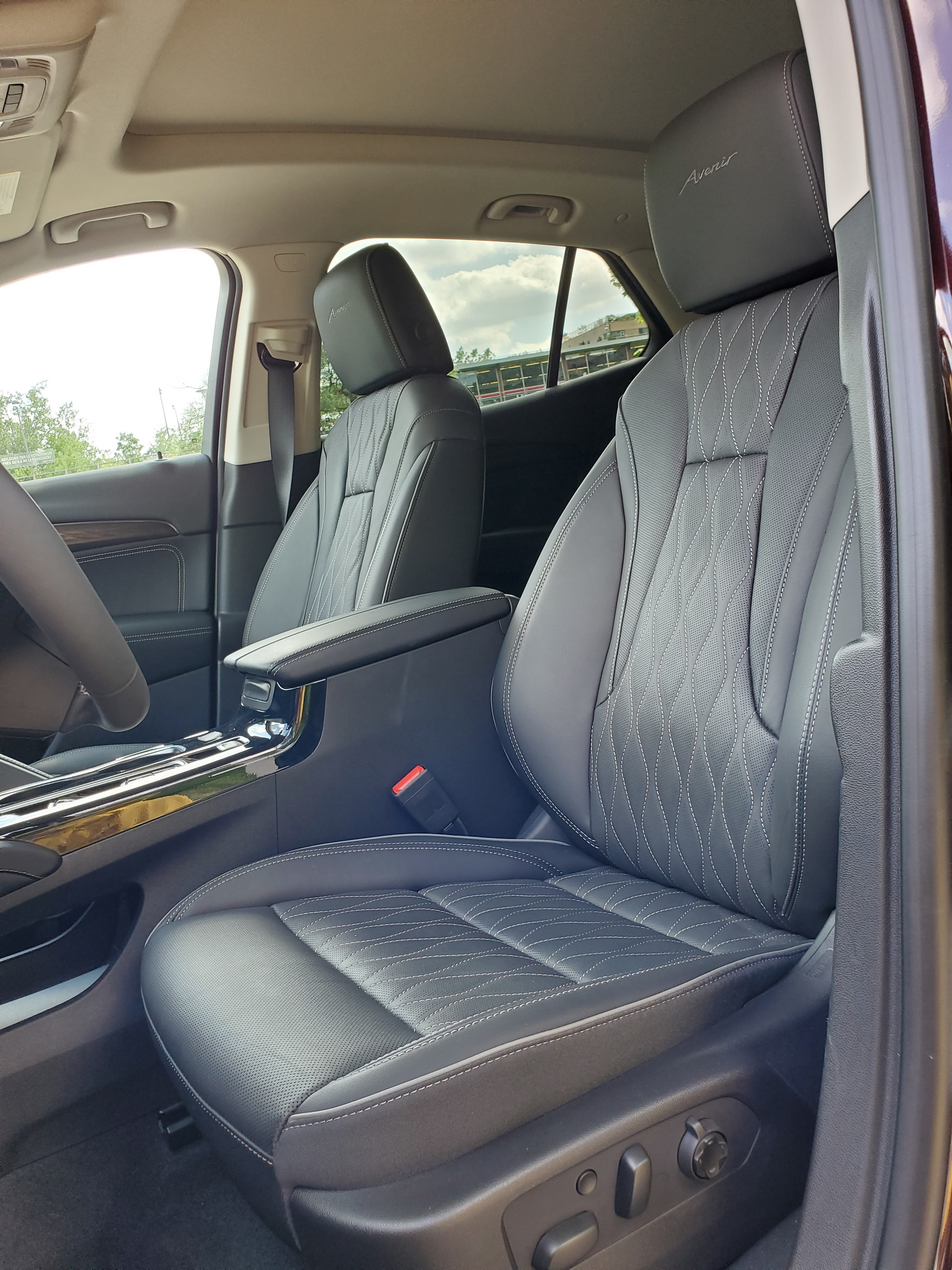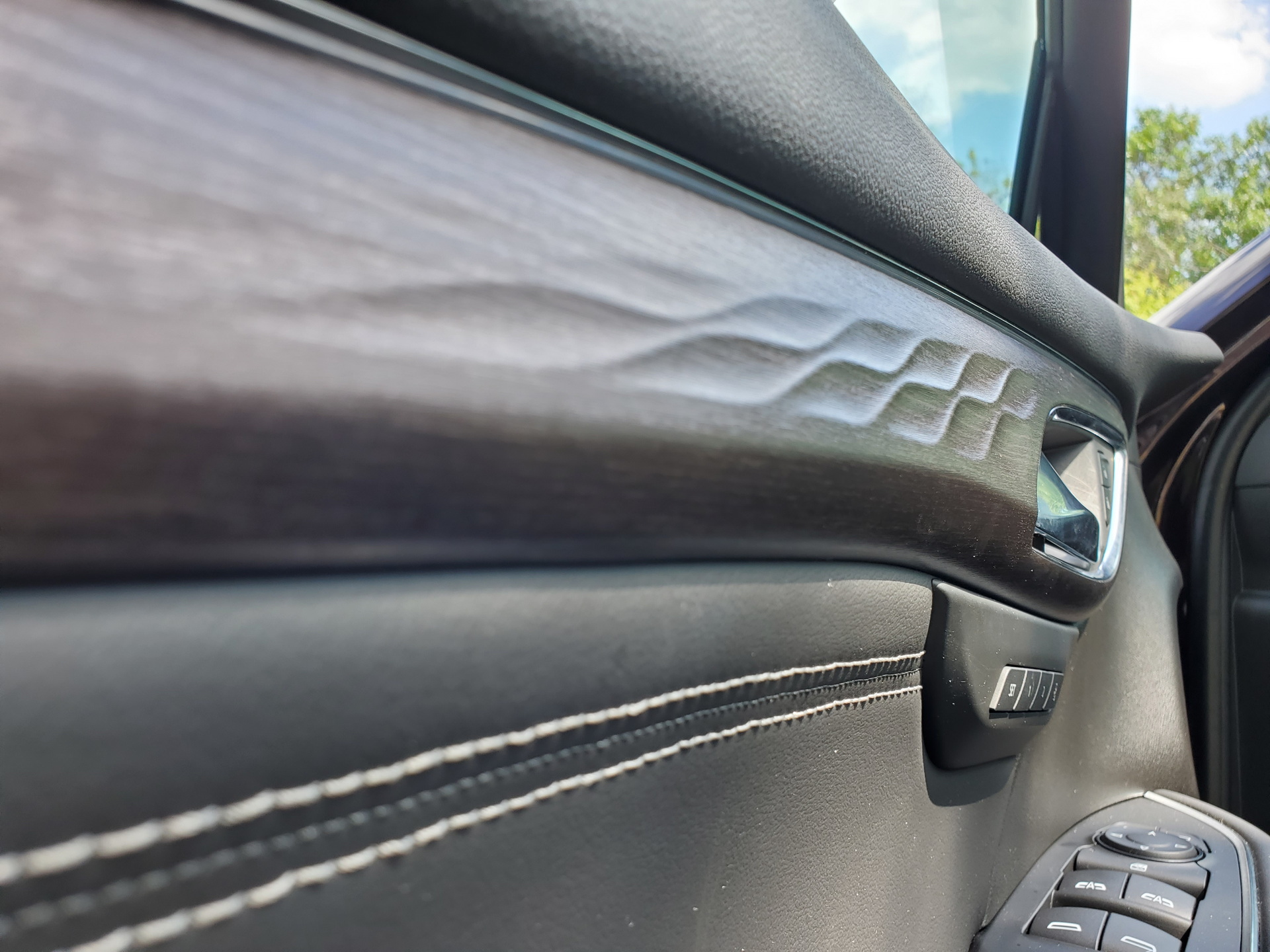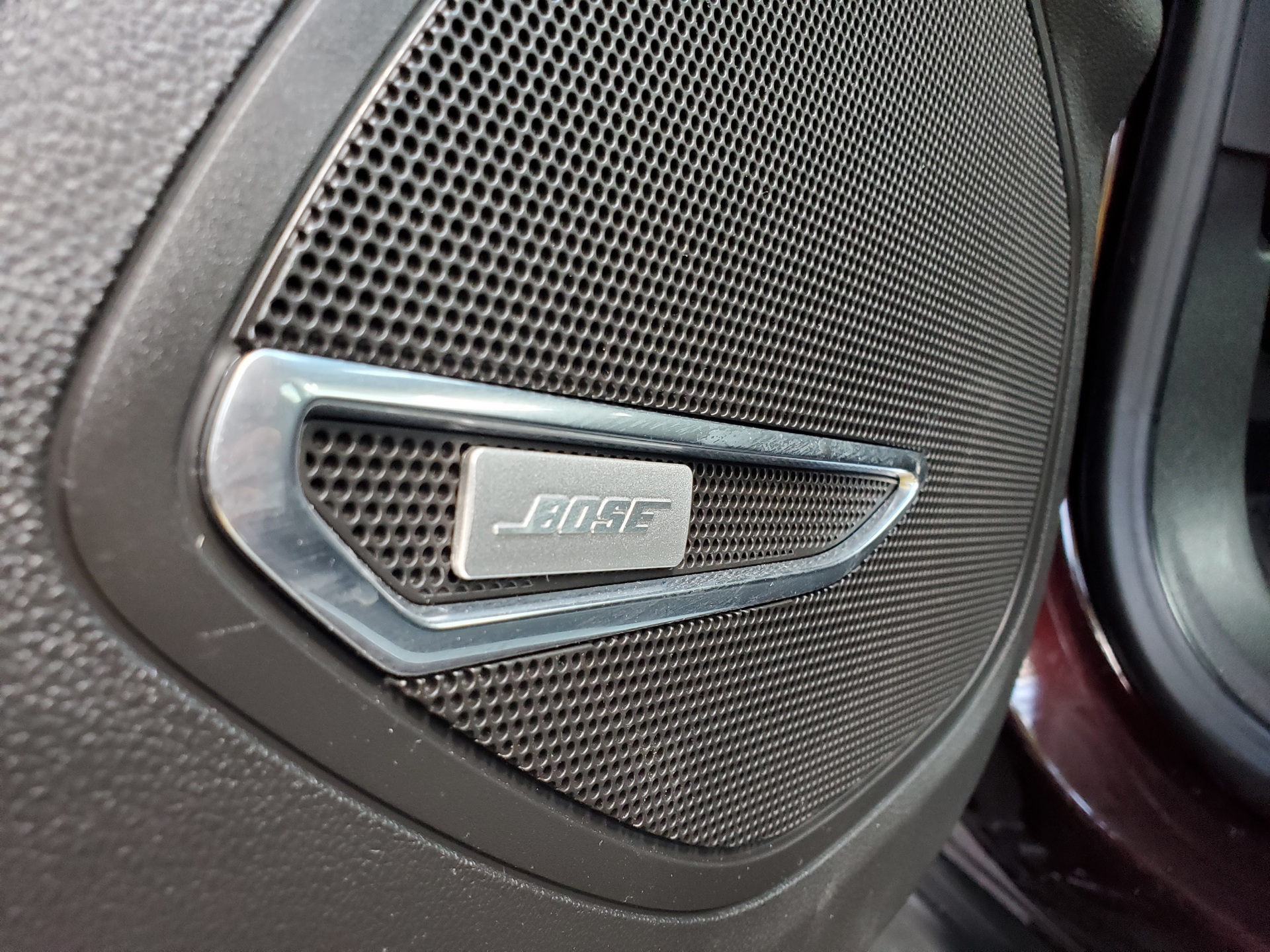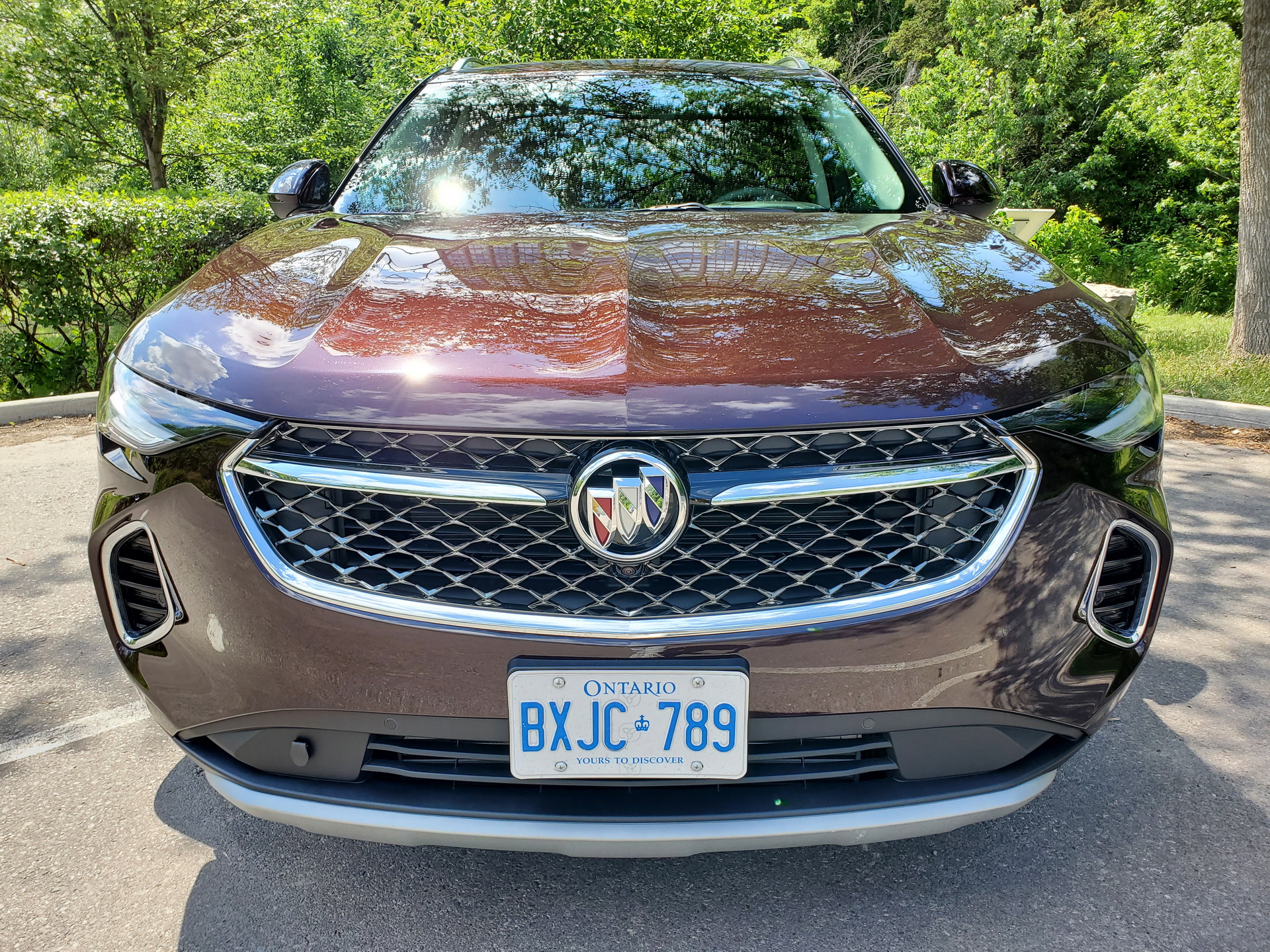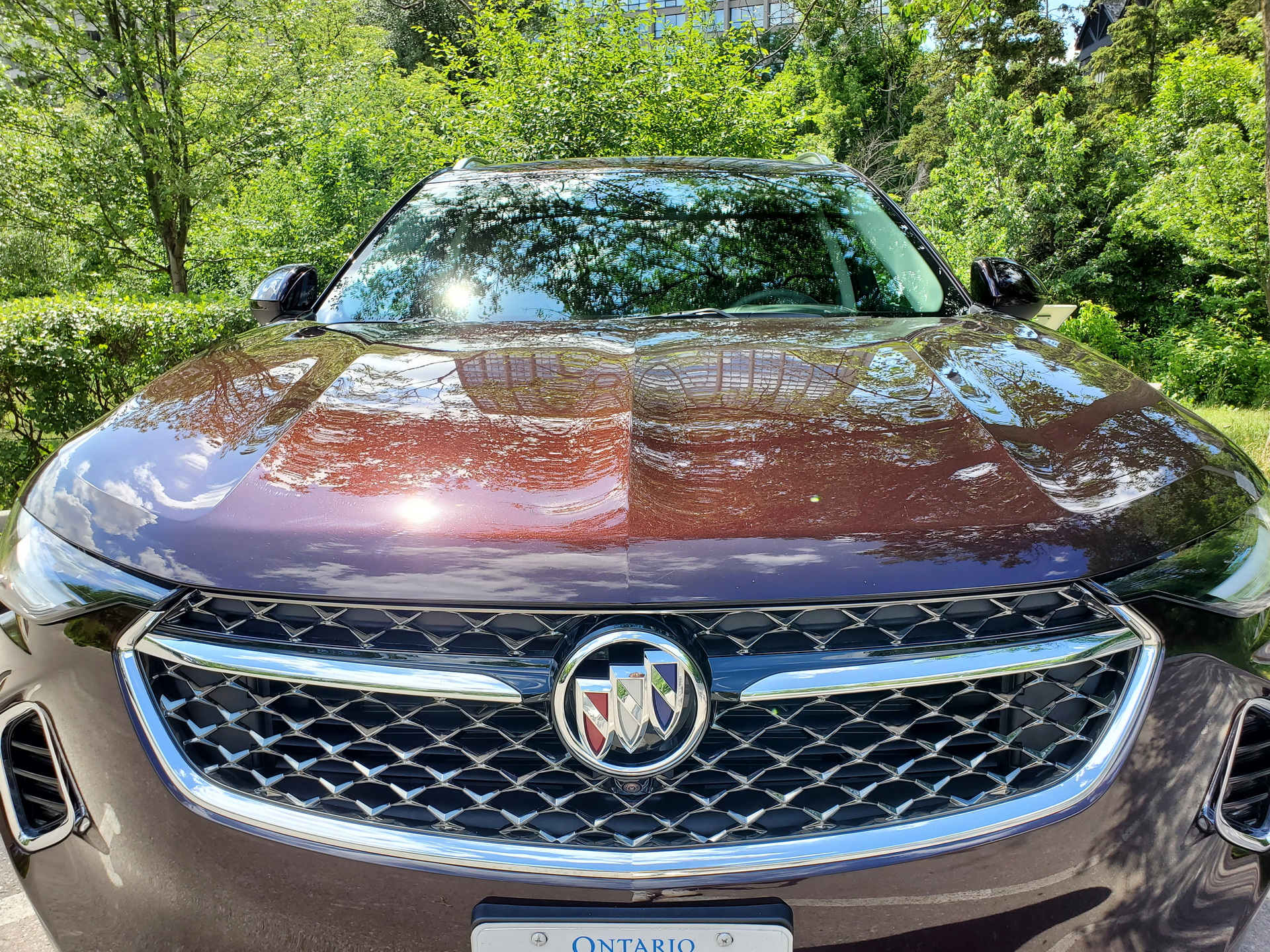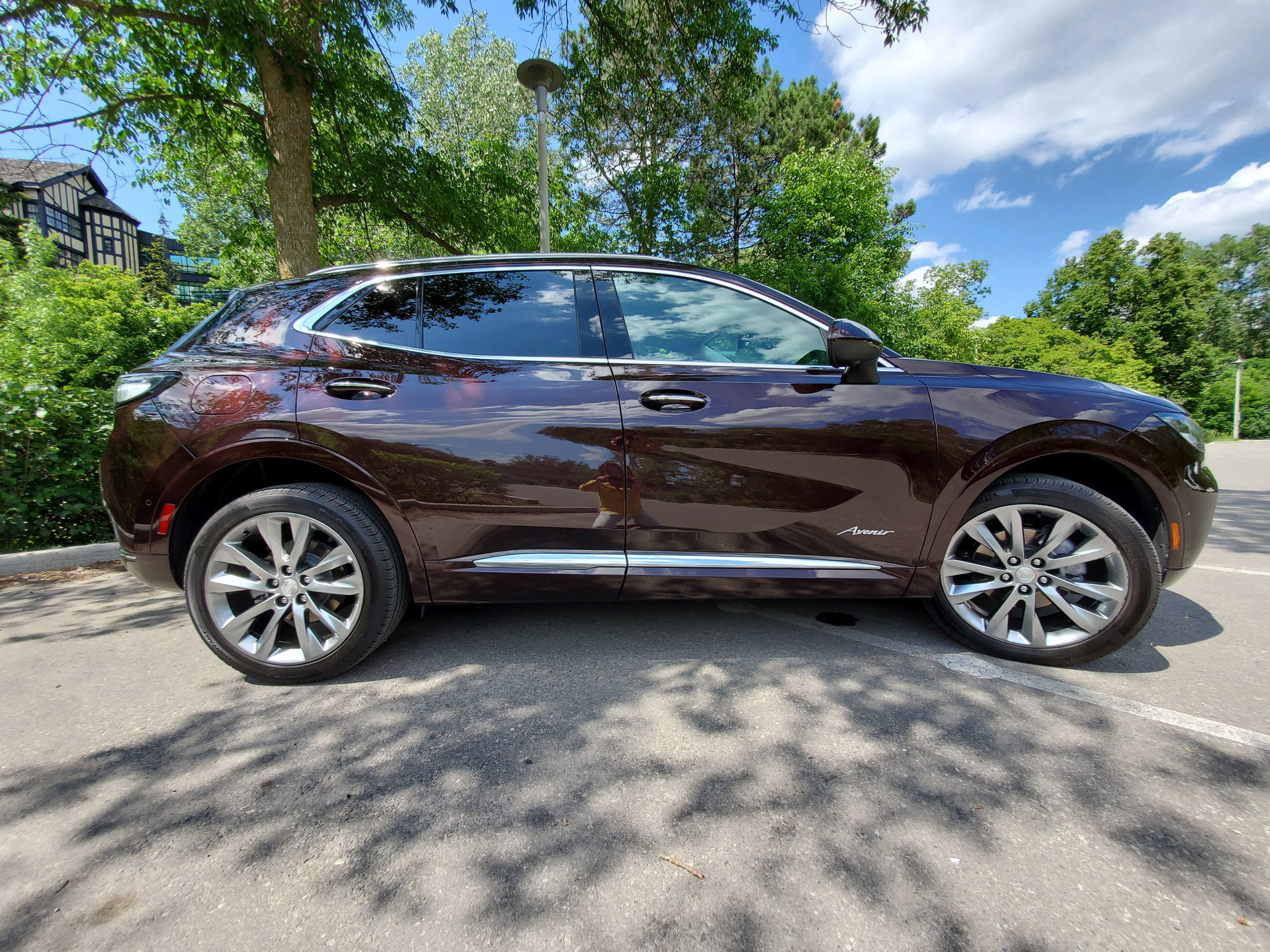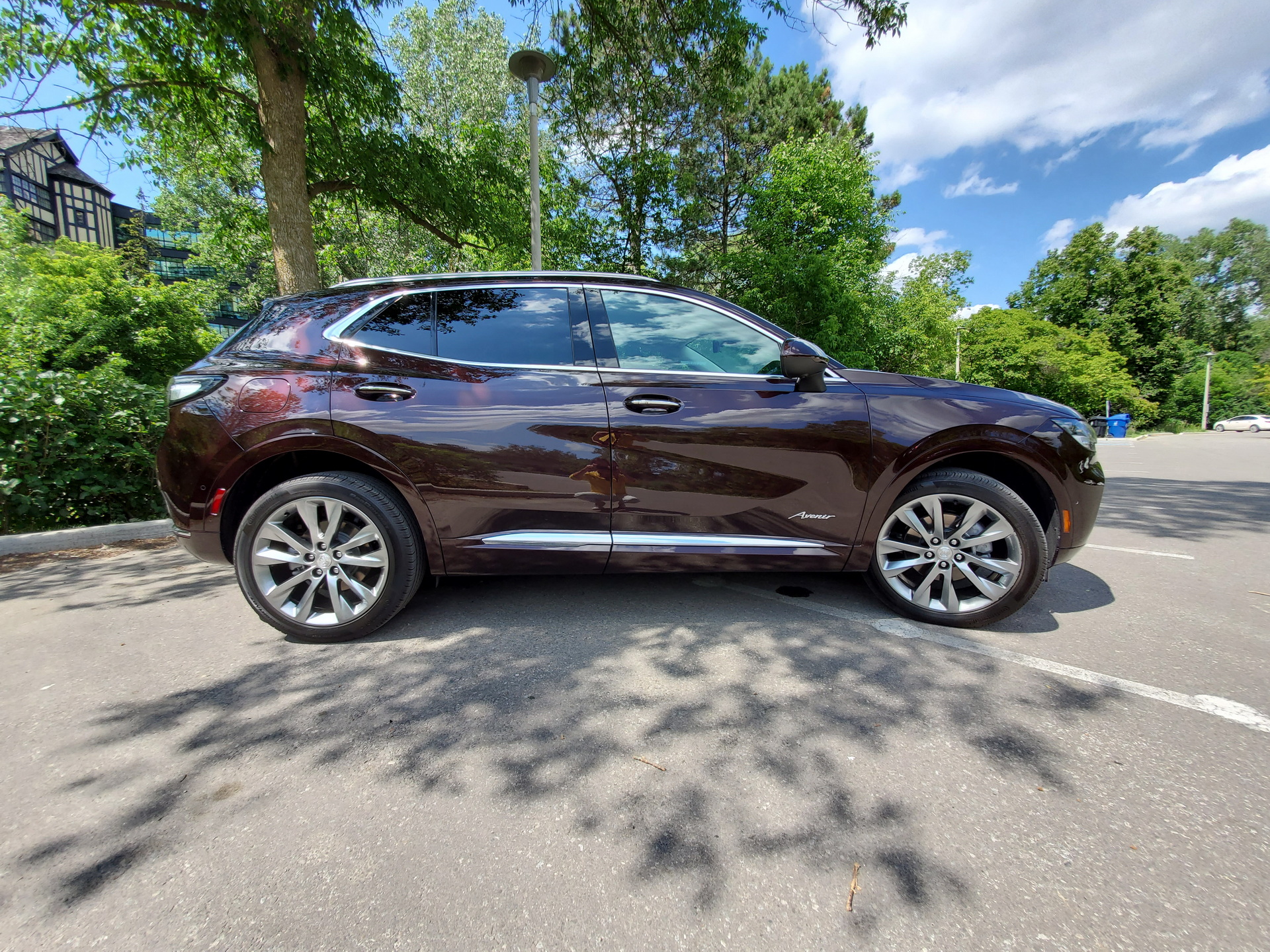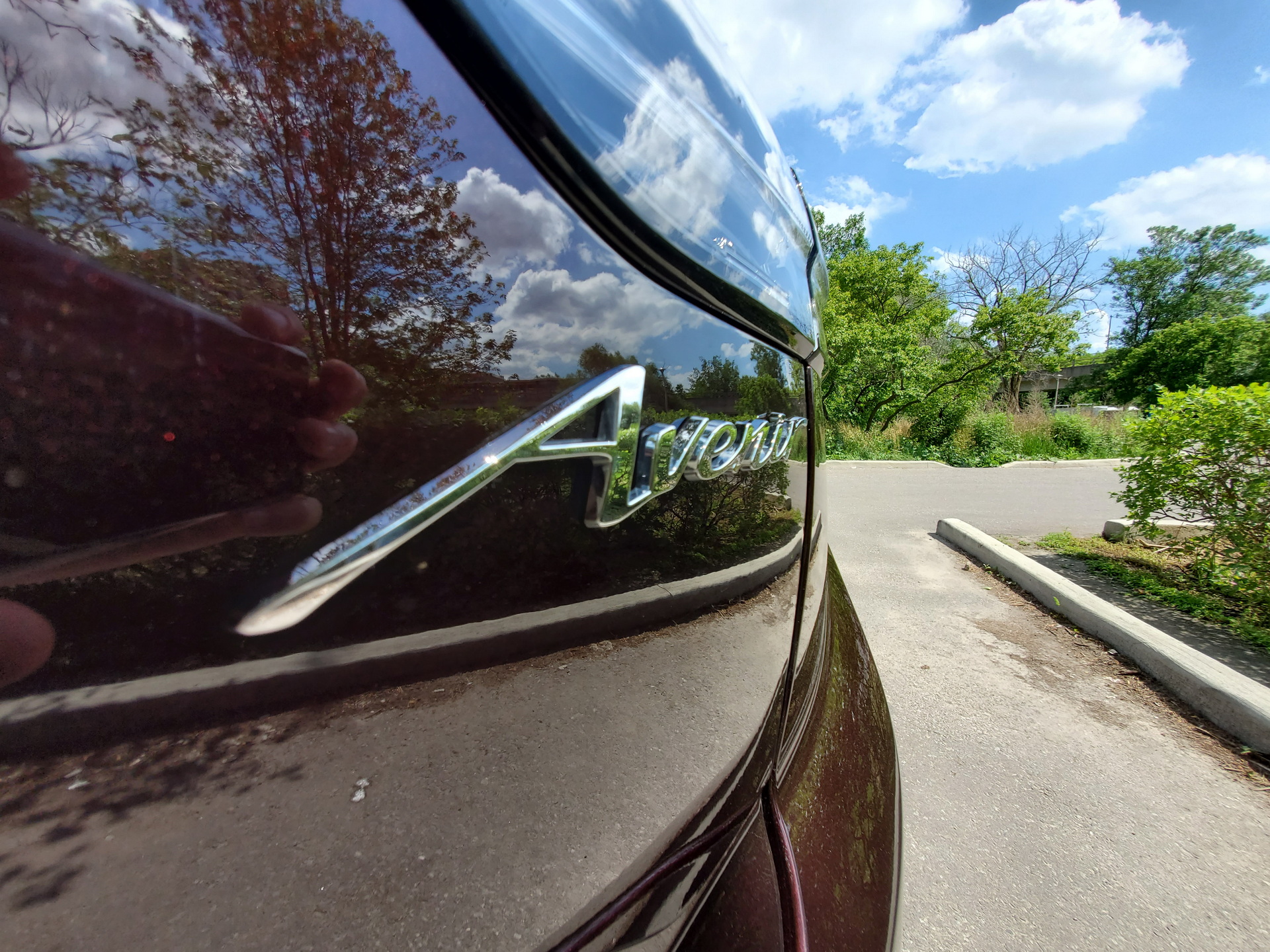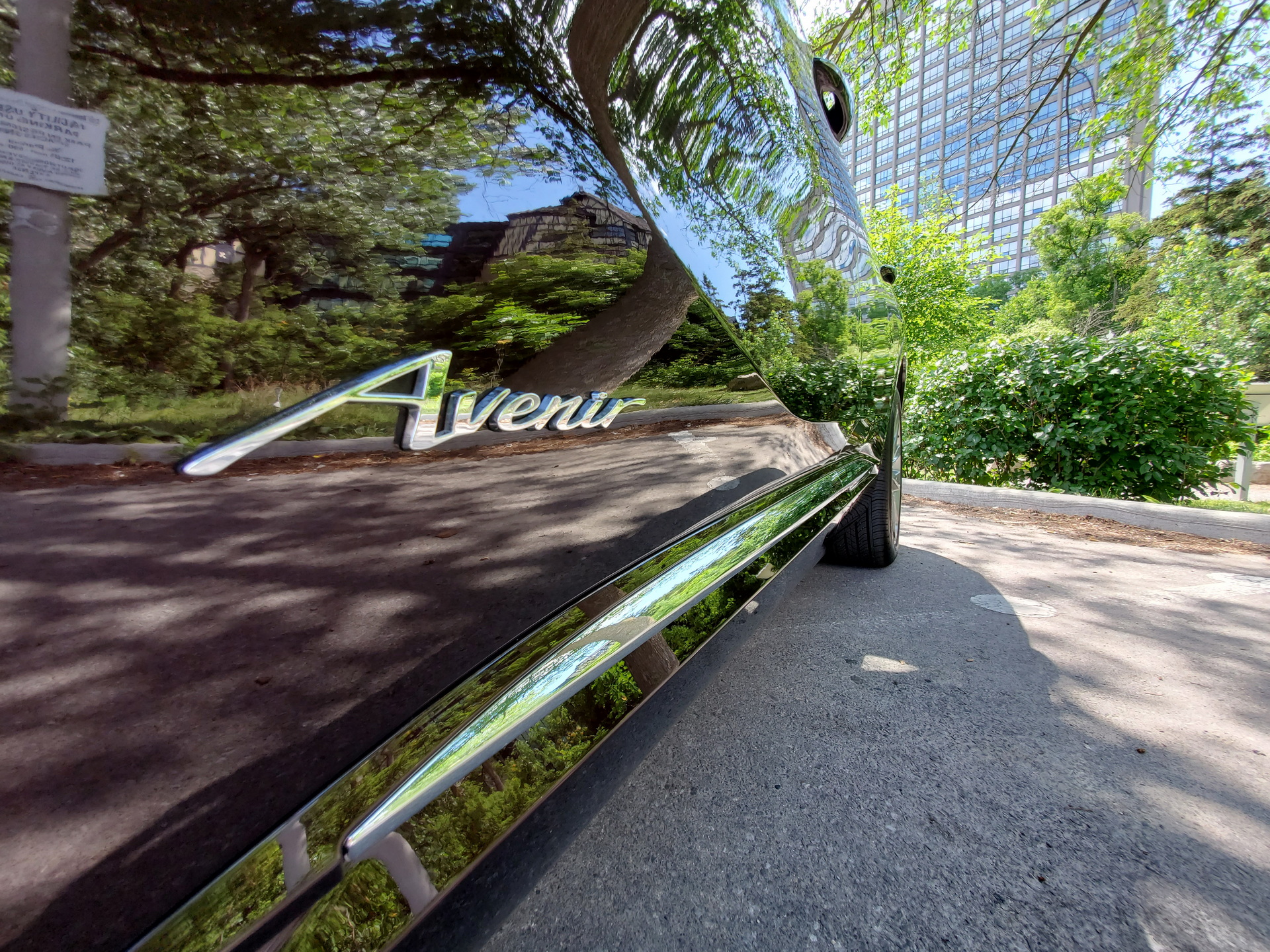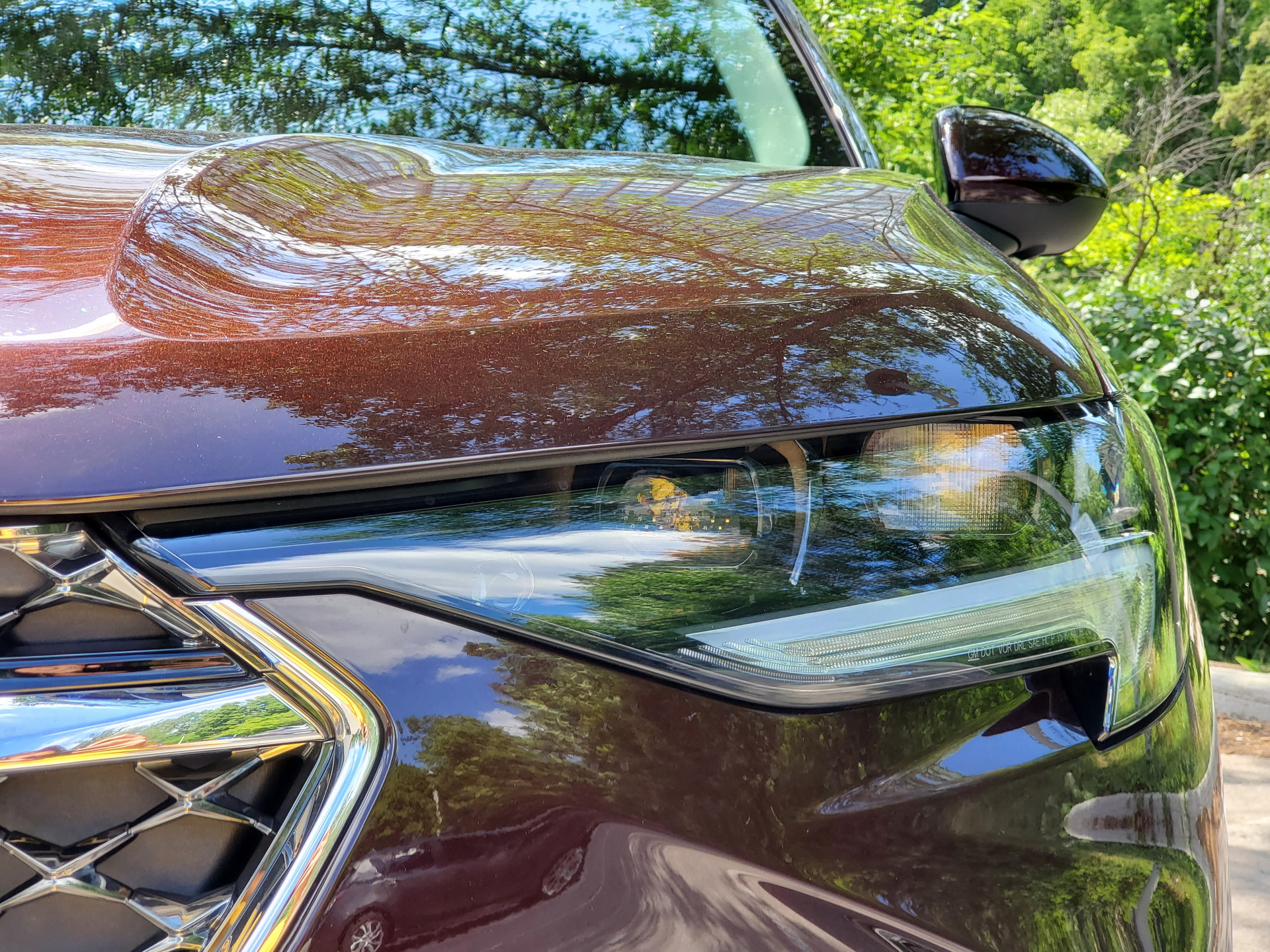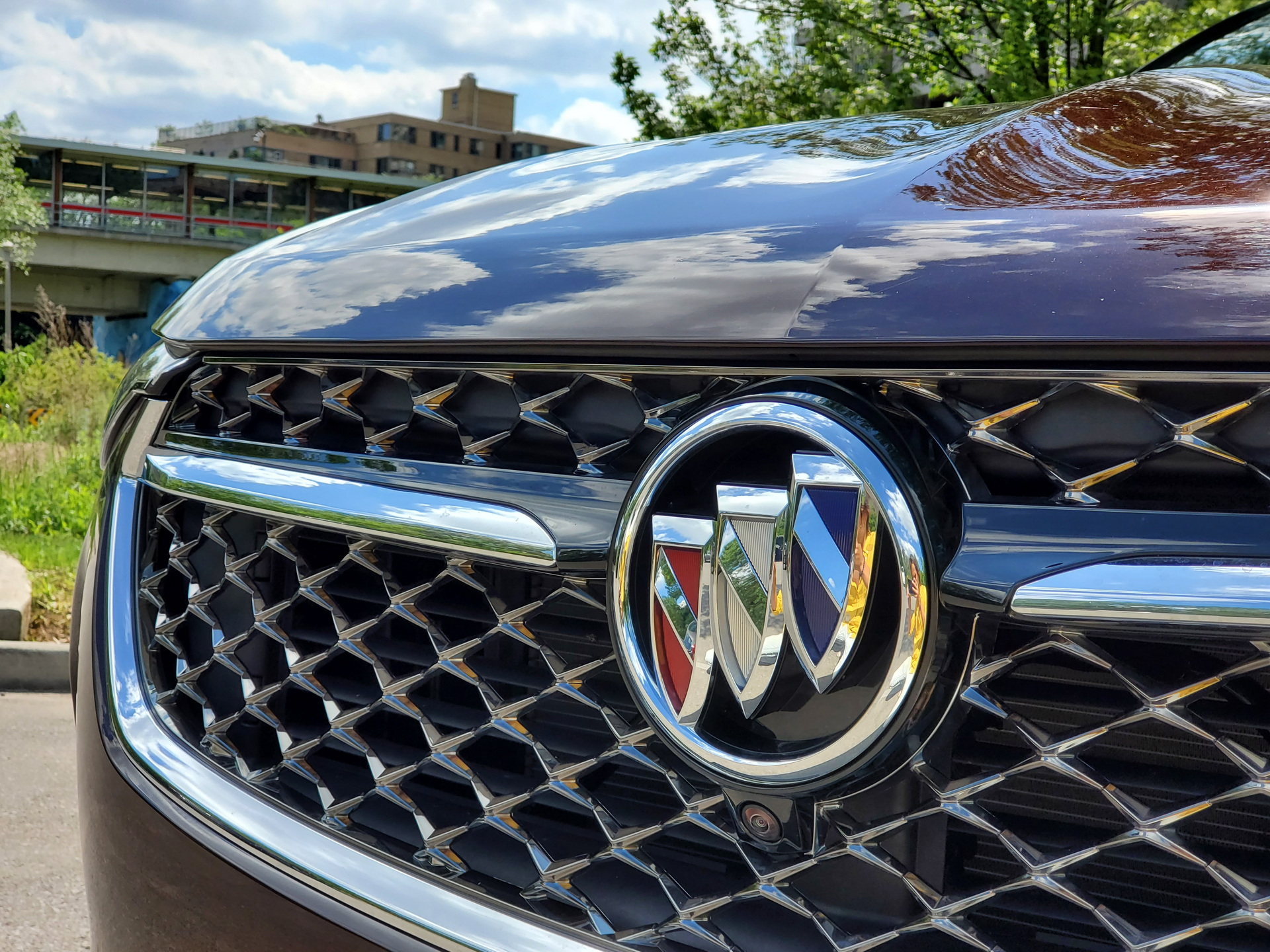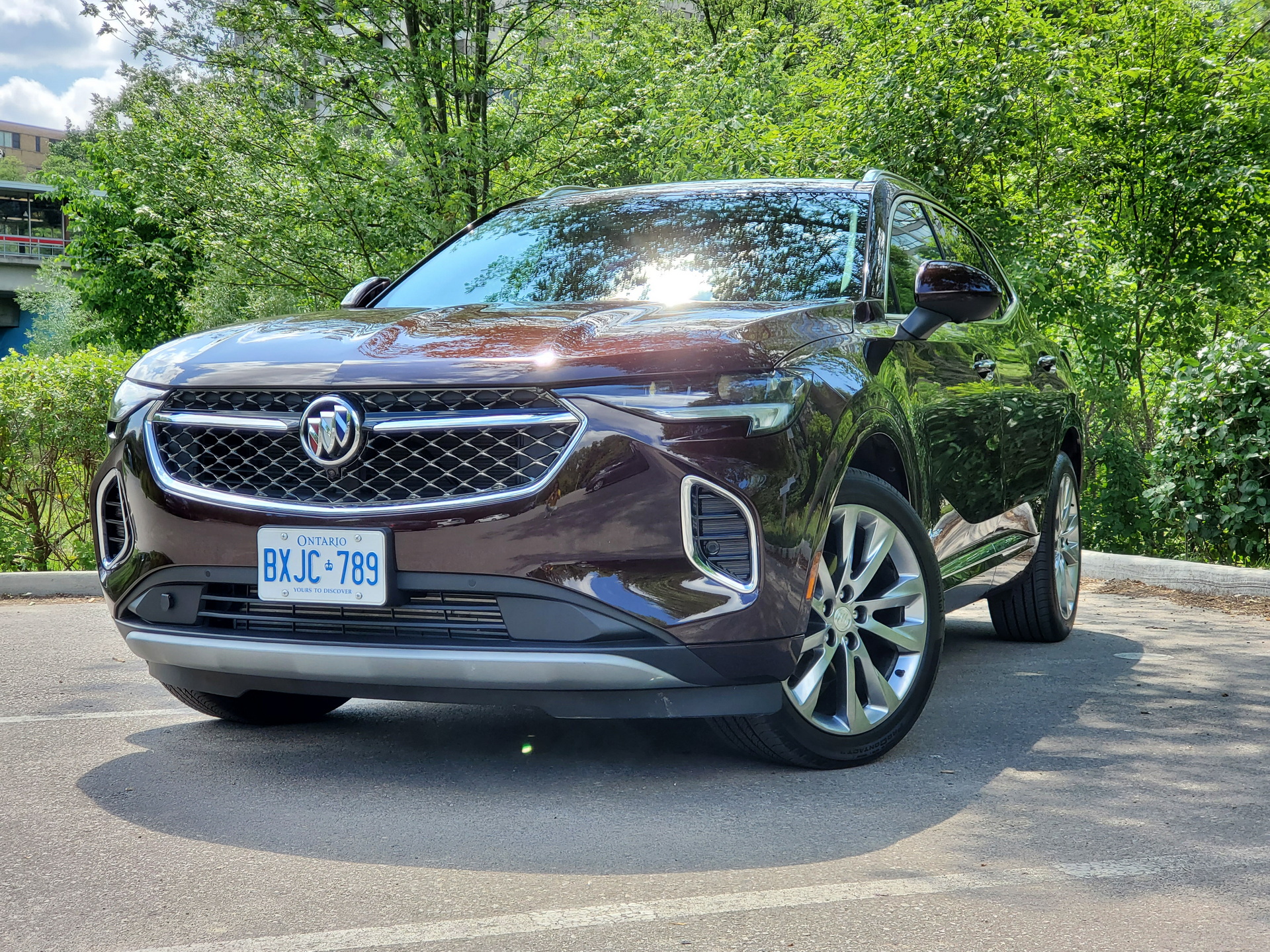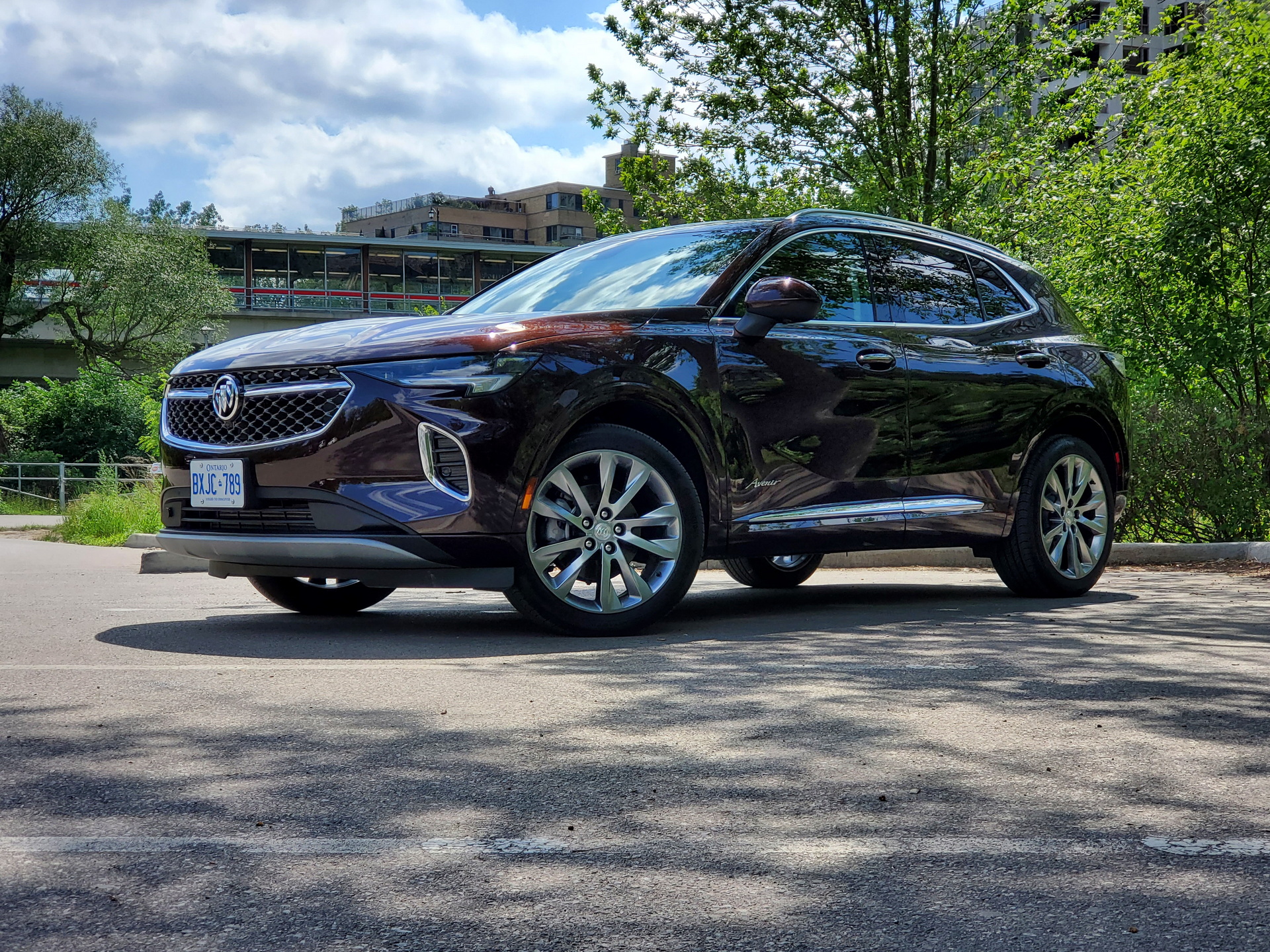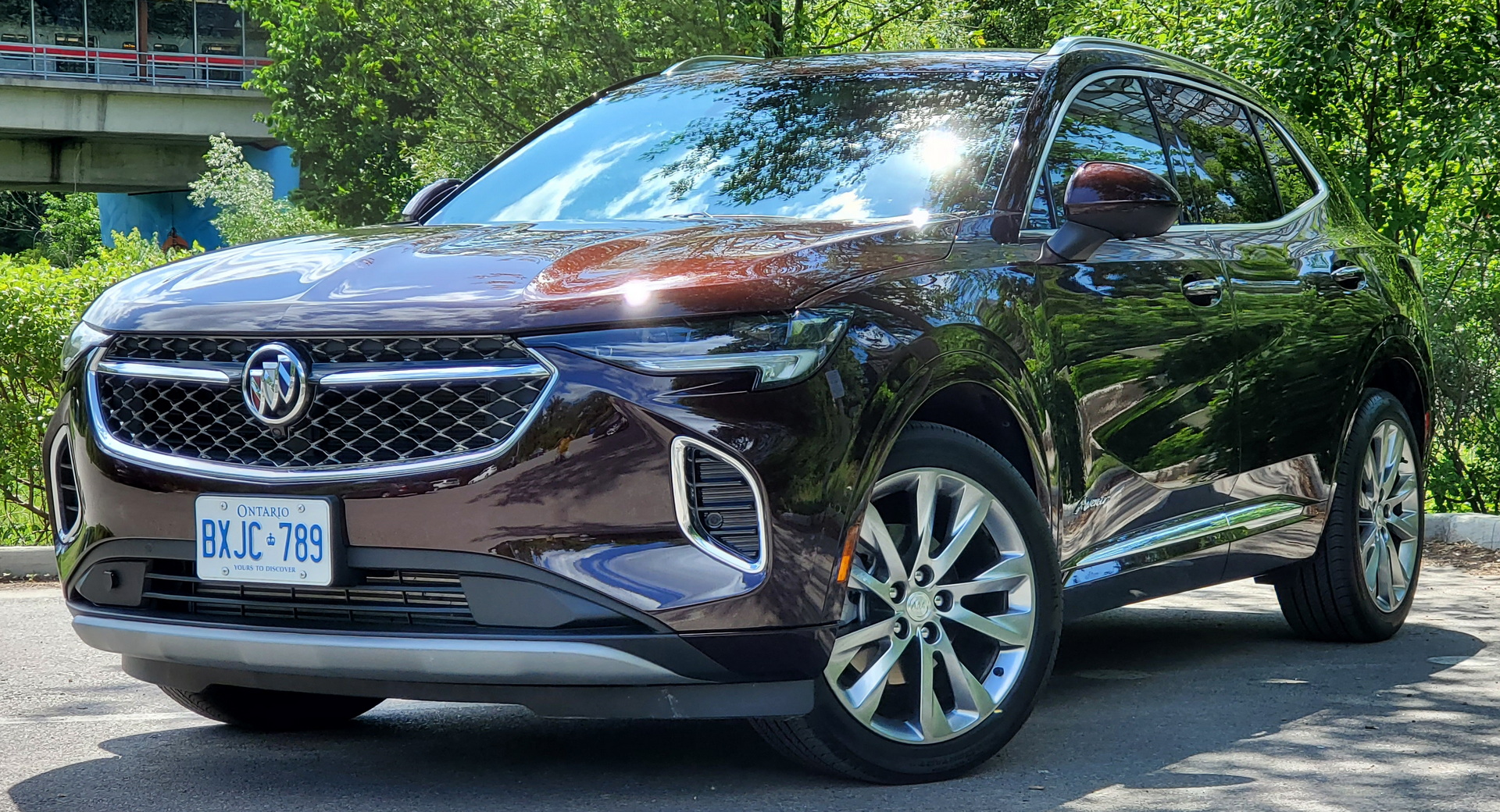As Buick continues to advertise itself on its ability to surprise with its new looks and tech, the Envision Avenir, supposedly the best that the brand is offering in this segment, serves as a vaguely disappointing reminder Buick hasn’t changed enough. With a ride that bobs more than an apple-picker and an interior that comes up just short of its luxurious mission, the crossover isn’t bad, but no one will be all that pleasantly surprised once they get past the handsome looks.
All sharp lines, attractive lighting elements, and an intriguing shade called Rich Garnet Metallic, the crossover seems alright in a fancy parking lot, looking like an offbeat choice in a sea of German repetitiveness. Unfortunately, once inside, you start to understand why the Germans own the “premium” marketplace with the likes of the BMW X3 and the Audi Q5.
Fancy-Pants Aspirations
Starting at $42,200 for the fancy-pants Avenir trim (or $44,698 in Canada where I live and where it’s the only trim available for the Envision) it’s priced a little lower than the German alternatives, which makes sense. I’ll concede here that the Avenir gets 80 percent of the way there with its fancy tech. It has a nice big 10.2-inch screen with wireless Apple CarPlay and Android Auto, as well as an inductive charger for your phone. All great features that, on a lower trim model (prices start at just $32,995 for the Preferred trim in the U.S.), the good looks and the good value might be enough to recommend it. But that big screen presented me, or rather my passenger, with the first hesitation.
Read Also: The New 2021 Buick Envision Features Eye-Catching Design
Angled acutely towards the driver, the screen seemed fine from my perspective, but my co-driver pointed out that the volume and tuning controls (and even the controls on the left-hand side of the big screen) were hard to reach. I get the temptation to say that a driver-focused cockpit is a good idea, but this is a crossover aimed firmly at families, so I don’t feel it controversial to say that it should consider the needs of the person in the passenger seat. Never mind that the driver is well-supplied with controls on the steering wheel.
That’s not too big a flaw but it’s annoying and it’s indicative of my bigger issue with the Envision Avenir, which is that it doesn’t quite understand the segment it’s in.
More to the point, touching anything apart from the screen is a bigger disappointment. The materials fail to live up to the expectations set up by the premium exterior looks and the high standards of the rest of the market. Sure, there are quilted leather seats, but they aren’t very comfortable, and never has there been a massaging feature in which it was clearer that the “massage” is simply a little balloon inflating and deflating. It’s the kind of stuff that presents well but gets old fast.
Once you feel the dash, you notice it’s made of disappointing plastic and up on top there’s a circular switch for a vent that’s hard to reach and would look more at home in a car from the ’80s than a modern premium SUV. I was also unimpressed by the wood veneer, which is so plasticky that I wonder if I could find a Fisher-Price logo if I looked hard enough.
As for the ergonomics, I tend to hesitate before complaining too much because all bodies are unique, but here’s what I’ll say: in most cars, there’s enough movement in the seats and the steering wheel to allow me to get into a comfortable driving position, but I really struggled with that in this Buick. The steering wheel was, at all times, much too far from me and the pedals much too close. It may seem subjective but no amount of seat cushioning and no length of massage will help make you feel comfortable if you can’t get into a right driving position in the first place.
Apple Bobbing
From the driver’s seat, I have one more complaint and that’s the ride, which was too soft. I understand that this is a premium car, so a comfortable suspension makes sense but to me, this feels poorly calibrated, not comfortable. Over one bump, I counted three full Mississippis before the bouncing stopped and the suspension settled itself.
Rather than being soft and cushy, it heaves and leans and bounces down the road, feeling more like a cartoon spring than a well-designed suspension. That’s not a recipe for comfort, it’s a recipe for seasickness. And that means that even slight bends become a little anxiety-provoking. I don’t expect it to feel like a sports car, but I genuinely found myself slowing down considerably for every turn I had to make because they all felt just a little too fast in this swaying boat of a crossover.
Unexciting But Adequate
As to the engine propelling the Envision Avenir along, I found it to be adequate. The 2.0-liter -four-cylinder engine makes all the power you really need (228 hp [170 kW / 231 PS] and 258 lb-ft [350 Nm] of torque) and gets decent mileage (22 MPG city/29 MPG highway—10.6l/100km city/8.1 l/100km highway). The nine-speed auto gets you seamlessly into the right gear to exploit that power. It’s unexciting, even within the segment, but given that Buick appears to have been going for comfort above all else, I’m fine with an engine that’s neither exciting nor annoying.
Coming Up A Little Short
The Envision is an attractive vehicle and the platform seems perfectly capable of producing a comfortable experience. If the suspension had a nicer setup and the interior quality upped just a little bit, I really think it would have been another great alternative to the standard options in the premium segment.
But as it is, with the competition being so stiff, it’s hard to recommend it over the German stalwarts, the familiar Japanese crossovers, or even the Korean competition. The Buick Envision Avenir’s shortcomings might not be unforgivable, but why buy a vehicle that you have to forgive at all when there are so many to choose from?




